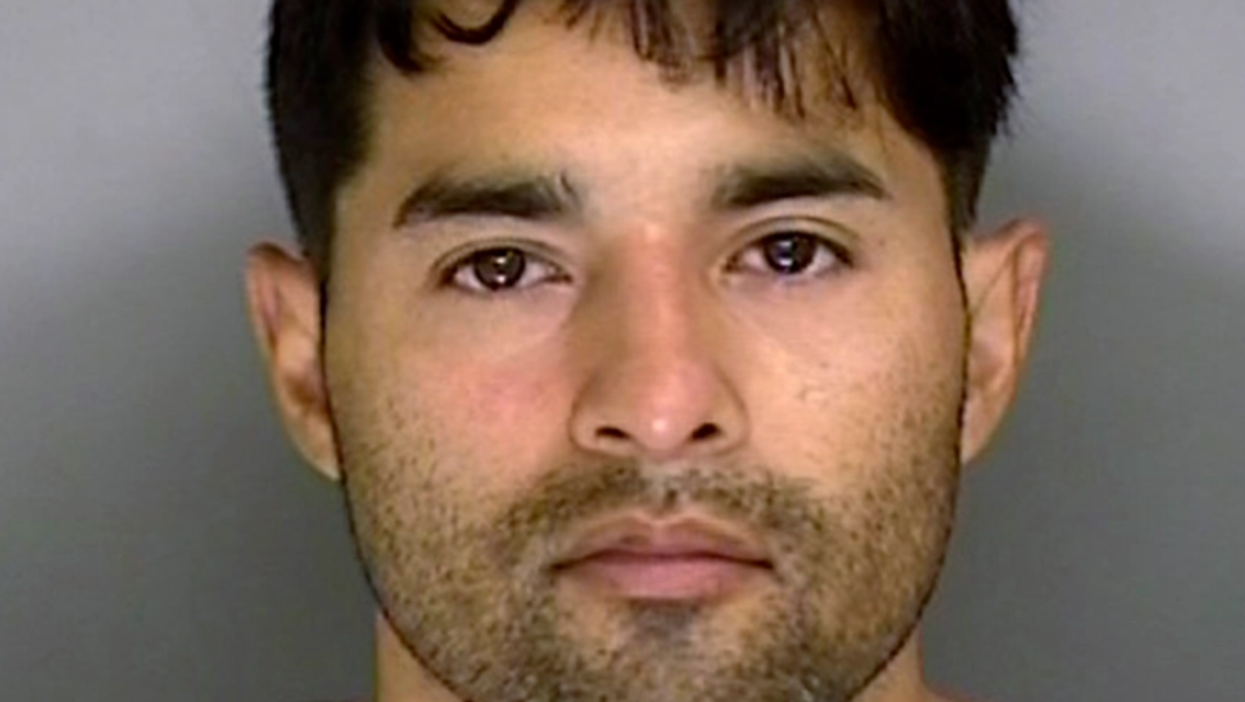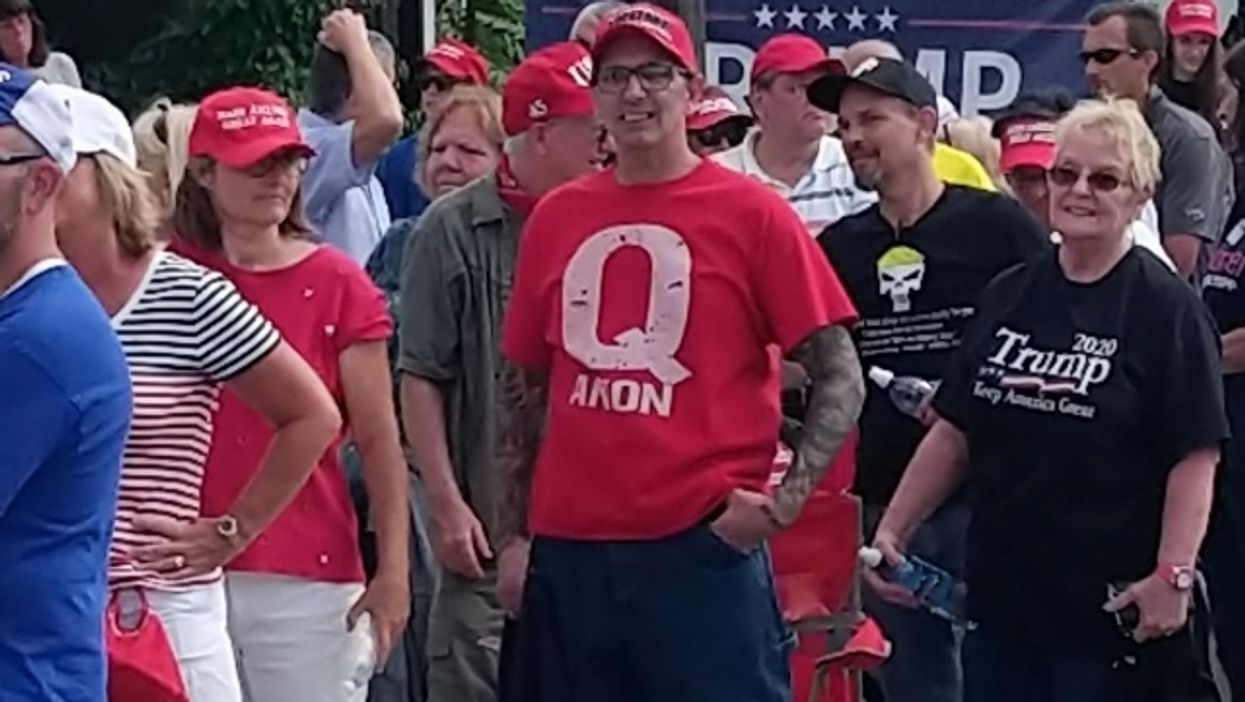Despite the widespread media narrative blaming Black Lives Matter and antifascist activists for last summer's protest violence, there were plenty of suspicions that far-right extremists seeking to intensify the public's fear of the "violent left" were in fact responsible for a significant amount of it. These suspicions were fed by such incidents as the assassination of a federal officer in Oakland by two far-right "Boogaloo Bois" and the arrest of another "Boogaloo" enthusiast from Texas for attacking a police station in Minneapolis.
Now we know, thanks to federal prosecutors investigating the Oakland incident, that in fact it was not the act of a single "lone wolf" and his accomplice, but rather part of a larger plot by group of far-right extremists who called themselves the "Grizzly Scouts" and planned a series of deadly attacks on law-enforcement officers with the intent of making it appear to be the work of the "violent left." Even more disturbing, according to the San Jose Mercury-News, most of these conspirators, following their arrests for destroying evidence in the case, have been released on bond by federal magistrates who have deemed them not a risk to the community.
The Grizzly Scouts, according to the grand jury indictment handed down in April, plotted a variety of lethal actions targeting law-enforcement officers in the months and weeks before fellow "Boogaloo Boi" Steven Carillo—an active-duty Air Force sergeant—shot and killed federal protection officer Dave Patrick Underwood on May 29, 2020, and then a week later, a Santa Cruz sheriff's deputy seeking to arrest him. Carrillo was a key member of the group, which in addition to planning attacks on police, engaged in paramilitary training exercises at the home of a member near Turlock, California.
The four men named in the indictment—Jessie Alexander Rush, 29, of Turlock; Robert Jesus Blancas, 33, of Castro Valley; Simon Sage Ybarra, 23, of Los Gatos; and Kenny Matthew Miksch, 21, of San Lorenzo—and Carrillo used a WhatsApp chat group for the Grizzly Scouts labeled "209 Goon HQ" to plan their attacks and organize training sessions as part of the so-called "Boogaloo" movement with which they identified.
The men created a so-called "Quick Reaction Force" intended to perpetrate acts of violence against their perceived enemies, and sent one member to scout a protest in Sacramento. They also cooked up an "Operations Order" document describing police officers as "enemy forces," and described taking some law-enforcement officers prisoner: "POWs will be searched for intel and gear, interrogated, stripped naked, blindfolded, driven away and released into the wilderness blindfolded with hands bound."
On May 26, three days before he shot Underwood, along with another federal officer who survived, at a Black Lives Matter protest in Oakland, Carrillo had messaged Ybarra that he wanted to conduct a "cartel style" attack on police, and the two men then met in person in Ybarra's van to discuss the idea. Before leaving his home in Ben Lomond for Oakland on May 29, Carrillo had texted Ybarra that he was heading out to "snipe some you know what's."
Carrillo then met up with another "Boogaloo Boi" named Robert Justus Jr., 30, of Millbrae, who drove the van to the BLM protest with Carrillo in the passenger seat, armed with the rifle he then used to open fire at a guard booth at the Ron Dellums Federal Building manned by Underwood and his partner. Justus later turned himself in to authorities.
During the week following the shootings, the Grizzly Scouts discussed their hopes that then-President Donald Trump would invoke the Insurrection Act as a response to the violence at the protests, which were inspired by the murder of George Floyd by a Minneapolis policeman.
"[T]hat ^^^ will be our sign," Rush—who had himself previously served in the military—texted the others. "That effectively means the federal gov has declared war on things they're afraid of." He added that "the gov spent 100s of thousands of dollars on training me, im gonna use that s—."
The Grizzly Scouts also considered various ways to concoct violence between leftist antifascist groups and police. Blancas told the others that he was "totally down" with the idea of disguising himself as an antifascist while stirring up violence.
"It's the tactically sound option," Blancas wrote. "Them f—ing each other up only helps us."
Their plans, however, fell apart on June 6 when sheriff's deputies, investigating reports of a van in the Santa Cruz mountains matching the description of one that witnesses identified at the scene in Oakland, arrived at the scene of what turned out to be Carrillo's mountain compound stocked with guns, bombs, and ammunition just as the van pulled away. They followed it to Carrillo's home in Ben Lomond where he then retreated, and when deputies went to arrest him, he unleashed a torrent of gunfire and pipe bombs, killing Sheriff's Sergeant Damon Gutzwiller, and wounding another.
Carrillo, who was himself wounded during the fight, left the scene in a white sedan, and then was found an hour later after running through his back yard, jumping onto a neighbor's property, entering the man's home and demanding his car keys. After the neighbor obeyed, he seized an opportunity to tackle Carrillo from behind and did so, knocking away his AR-15 in the process, and then knocking away both a pipe bomb and his handgun when he tried to reach for them while on the ground. The neighbor held him there until deputies arrived and took Carrillo away.
Prior to the deputies' arrival at his mountain compound, Carrillo had texted the other members of the Grizzly Scout group on WhatsApp, according to the documents filed in the four men's indictment. He told the group that he was "preparing to engage in a shoot-out with law enforcement," the indictment says. "Carrillo asked the other Grizzly Scouts to come to his aid, saying: 'Kit up and get here. Theres inly one road in/out. Take them out when theyre coming in. ... Police are here fkr me . . . Theyre waiting for reenforcements im listening to them."
Carrillo explained his predicament to the "209 Goon HQ" participants: "Dudes i offed a fed."
At that point, the other Grizzly Scouts promptly went into ass-covering mode, destroying evidence of their interactions. Rush instructed Carrillo to "factory reset" his phone, which the indictment notes "would have had the effect of deleting and destroying any evidence on it, including any stored communications." The other men all promptly deleted any records of the "209 Goon HQ" WhatsApp group from their phones, including the discussions about violence against law enforcement and Carrillo's confession.
These deleted files, according to the indictment, "appeared to include, for example, files concerning the rank structure of the Grizzly Scouts, a non-disclosure agreement requiring members of the Grizzly Scouts to maintain the confidentiality of the group's materials, a liability release waiver, descriptions of Grizzly Scouts uniforms, and a scorecard to assess members of the Grizzly Scouts with respect to combat, firearms, medical, and other training."
Carrillo now faces multiple felony charges in both the Oakland murder and the Ben Lomond shooting, while Justus has been charged with acting as his accomplice.
However, his Grizzly Scout cohorts so far have only been charged with obstructing justice, primarily because of their attempts to cover the militia group's tracks leading to Carrillo. Three of the four men have been released from custody on bond; only Blancas remains in prison, largely because he also faces a child enticement charge related to alleged sexual conversations with a teenage girl discovered in the course of the investigation. Ybarra was released by a federal judge in Sacramento, and U.S. Magistrate Judge Jacqueline Scott Corley released Rush and Miksch after their hearings in April.
Miksch was released on a $25,000 bond to the custody of his parents, who insisted their son was a "good kid." Corley, while calling his views "abhorrent," also released Rush under the custody of his wife on a $50,000 bond. Corley imposed certain restrictions on the men: monitored internet use, a prohibition on weapons possession, and not contacting other militia members.
Carrillo's path of radicalization was the subject of an April ProPublica investigative piece that detailed how social media and internet conspiracy sites led him to join the Grizzly Scouts and plan acts of terrorist violence in the name of a far-right-fueled civil war. The report uncovered documents showing how the Grizzly Scouts went about organizing for those acts:
The documents also make clear that Carrillo's military background, in particular his advanced combat and weapons training, provided exactly the qualities the Grizzly Scouts wanted in its recruits. The Grizzly Scouts' members — law enforcement officials say the group had attracted 27 recruits — were given military ranks and roles based on their level of military training and prior combat experience. Some Grizzly Scouts were designated "snipers," others were assigned to "clandestine operations," and some were medics or drivers. Whatever their role, all were expected to maintain go kits that included "combat gauze" and both a "primary" and "secondary" weapon.
"This group was different," Jim Hart, the sheriff of Santa Cruz County, where Ben Lomond is located, told ProPublica. "There was a definite chain of command and a line of leadership within this group."
Ironically, Carrillo's lethal violence nonetheless had its intended effect in spreading the right-wing narrative that the "violent left" was primarily responsible for the mayhem around anti-police-brutality protests. The very killings he perpetrated, in fact, were trotted out by Republican Senator Ted Cruz as evidence of "antifa violence" during a Senate hearing, and by then-Vice President Mike Pence in his GOP Convention acceptance speech.












